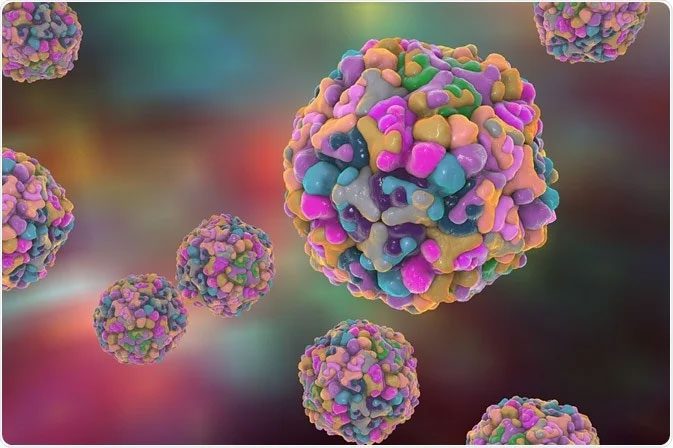PCR testing of samples from severe hand, foot, and mouth disease cases has revealed the dangerous Enterovirus strain (EV71) re-emerging since the outbreak in 2011.
In 2011, EV71 caused a significant outbreak of hand, foot, and mouth disease in Ho Chi Minh City, resulting in numerous severe cases and fatalities. At that time, the prevalent strain was C4. In 2018, the number of severe cases decreased, primarily attributed to strain B5. This year, representatives from the Department of Health have stated they are continuing to work with the Oxford University Clinical Research Unit (OUCRU) to sequence the virus’s genes to identify the dangerous strain of EV71.
EV71 is characterized by rapid transmission and severe progression, often accompanied by high fever. Children infected with EV71 may experience complications such as neurological issues, cardiovascular problems, pulmonary edema, shock, heart failure, and rapid death.

Cases of EV71 infection are more complex.
When the EV71 virus enters the body, it typically resides in the oral mucosa or the intestinal mucosa in the ileum. After 24 hours, the virus spreads to the surrounding lymph nodes and subsequently enters the bloodstream, causing bacteremia within a short period. From bacteremia, the virus spreads to the oral mucosa and skin. The incubation period usually lasts 3-7 days.
The onset of the disease is marked by fever, followed by the appearance of vesicles on the oral mucosa (gums, tongue, inside of the cheeks) and erythema on the hands and feet. In cases of EV71 infection, the disease can progress more severely, especially when the virus affects the central nervous system, leading to typical meningitis symptoms.
Type EV71 not only causes hand, foot, and mouth disease but also has the potential to affect the central nervous system, leading to viral meningitis and, more rarely, severe forms such as encephalitis or paralysis resembling polio.
Currently, hospitals are capable of performing PCR tests to diagnose the causative agent of hand, foot, and mouth disease. However, according to the diagnosis and treatment guidelines from the Ministry of Health, diagnosis is primarily based on clinical evaluation, with testing for the pathogen reserved for severe cases to differentiate from other illnesses and for epidemiological research.
Representatives from the Department of Health emphasize the importance of early detection of severe symptoms to ensure timely hospitalization and treatment. Consequently, the department has established a team of experts to assist in consulting severe cases and is organizing inspections across districts on epidemic prevention efforts. Pediatric hospitals are prepared with resuscitation equipment for severe cases, including dialysis machines, ECMO (extracorporeal membrane oxygenation), and treatment medications according to protocols.
The department has also requested the Ministry of Health and the Department of Pharmaceutical Management to ensure adequate supply of medications, particularly two intravenous drugs, Phenobarbital and Gamma Globulin, for severe patients.
Rapid response teams and the health centers in districts and Thu Duc City have initiated community, family, and school epidemic prevention efforts.
Hand, foot, and mouth disease is an acute viral infection, transmitted via the digestive tract, commonly affecting young children and capable of causing large outbreaks. The characteristic signs of the disease include fever, sore throat, lesions in the oral mucosa and skin, primarily in the form of vesicles typically found on the palms, soles, knees, and buttocks. Most cases are mild. However, some cases can progress severely, leading to dangerous complications that may result in death. Early detection and timely treatment of the disease are crucial. Handwashing is the most important preventive measure. Clean children’s toys and household surfaces with soap, Javel solution, or other common disinfectants. Early detection of signs of hand, foot, and mouth disease in children, such as the appearance of vesicles on the palms and soles or mouth sores, is essential for timely isolation and limiting transmission. Children with hand, foot, and mouth disease need close monitoring to quickly identify severe signs such as persistent high fever, excessive vomiting, restlessness, or tremors. |


















































